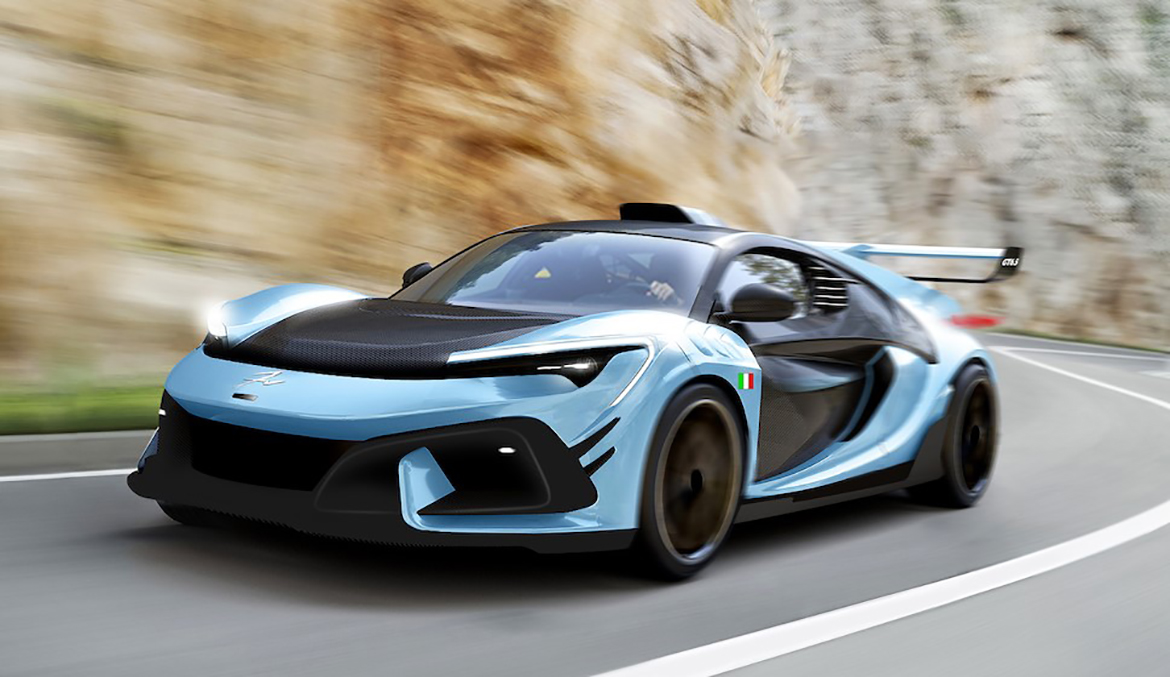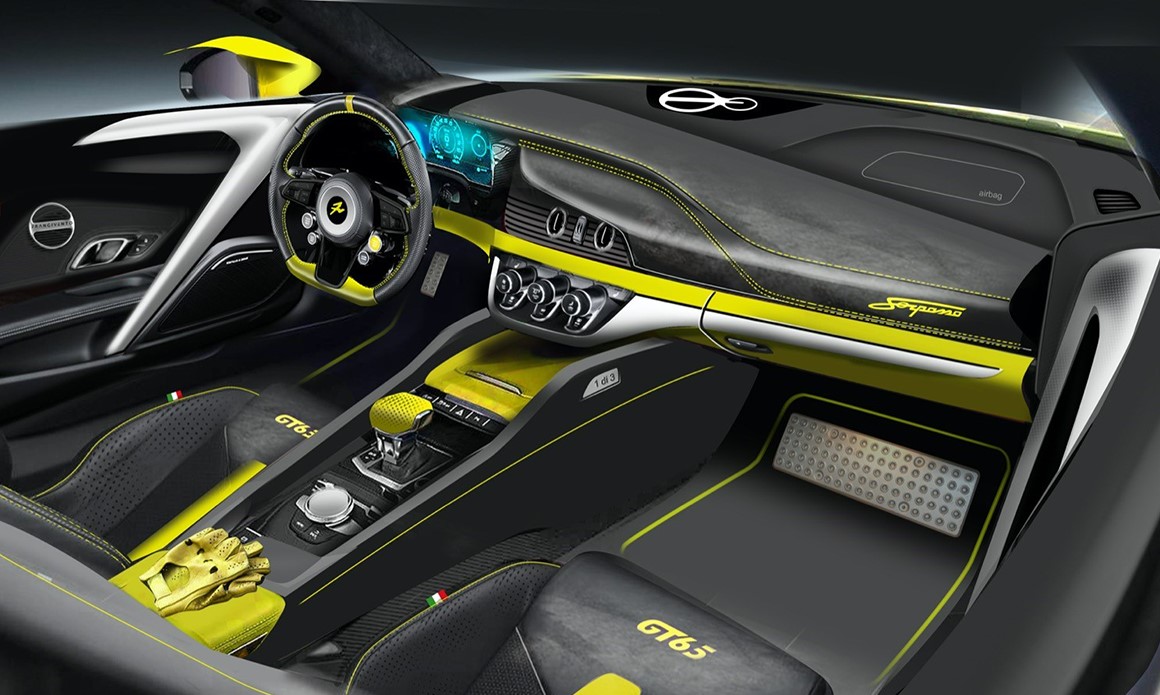After entering the world of luxury cars with the still evolving project of the Asfané hybrid hyper-car, the Frangivento brand, founded in Turin by designer Giorgio Pirolo and by Paolo Mancini, a specialist in the design and construction of special cars, has plunged into the prolific niche of luxury “tailor made” cars with the Sorpasso, the first example of which was presented on Friday 24th in Monte Carlo during the hand-over ceremony. The Sorpasso, which Auto&Design was able to preview a few days before the event, gathering comments from the authors, is a supercar built on a chassis of Italian-German origin and with a V10 engine. The standard version, known as the Stradale, retains its “standard” power output of 610 bhp, while the more extreme GT3 variant, approved for road use in spite of its name, receives an upgrade that includes supercharging (for a final 880 bhp) and a much more “loaded” look, clearly inspired by racing.
The first example, produced in the former Stola factories in Turin, is a GT3 in red and black livery. It is personalised with a plaque on the right mudguard bearing the number 1 on an Italian flag, while a similar one on the left mudguard bears the purchaser’s initials and the flag of the United Arab Emirates. The car is generously sized, even if its proportions make it seem more compact than it is: the extensive aerodynamic appendages, including the large wing with central fin inspired by modern endurance cars, push the length to the 5 metre mark, balanced by a width that exceeds 2 metres.
The lines contain plenty tributes not only to the racing world, such as the rounded doors that recall the bellies of F1 cars and the rear extractors, highlighted for both aesthetic and functional reasons, but also to some famous road cars: these range from the milled aluminium slats on the rear door pillars (reminiscent of the Lamborghini Miura) to the V-shaped vents on the front wings, and the trapezoidal theme on the front that recalls the latest Ferraris and some of Pininfarina’s work, while the rounded shape of the rear wings, the straight line that runs from the roof to the tail and the slim LED rear lights recall today’s Bugatti hyper-cars. The bonnet, divided into two parts hinged at the centre, is original, as are the exhausts with three outlets, the smallest two of which are purely decorative, while the solutions adopted for the interiors are highly personal, entirely upholstered in Fiore leather and Alcantara and with quilted upholstery also on the roof lining.













